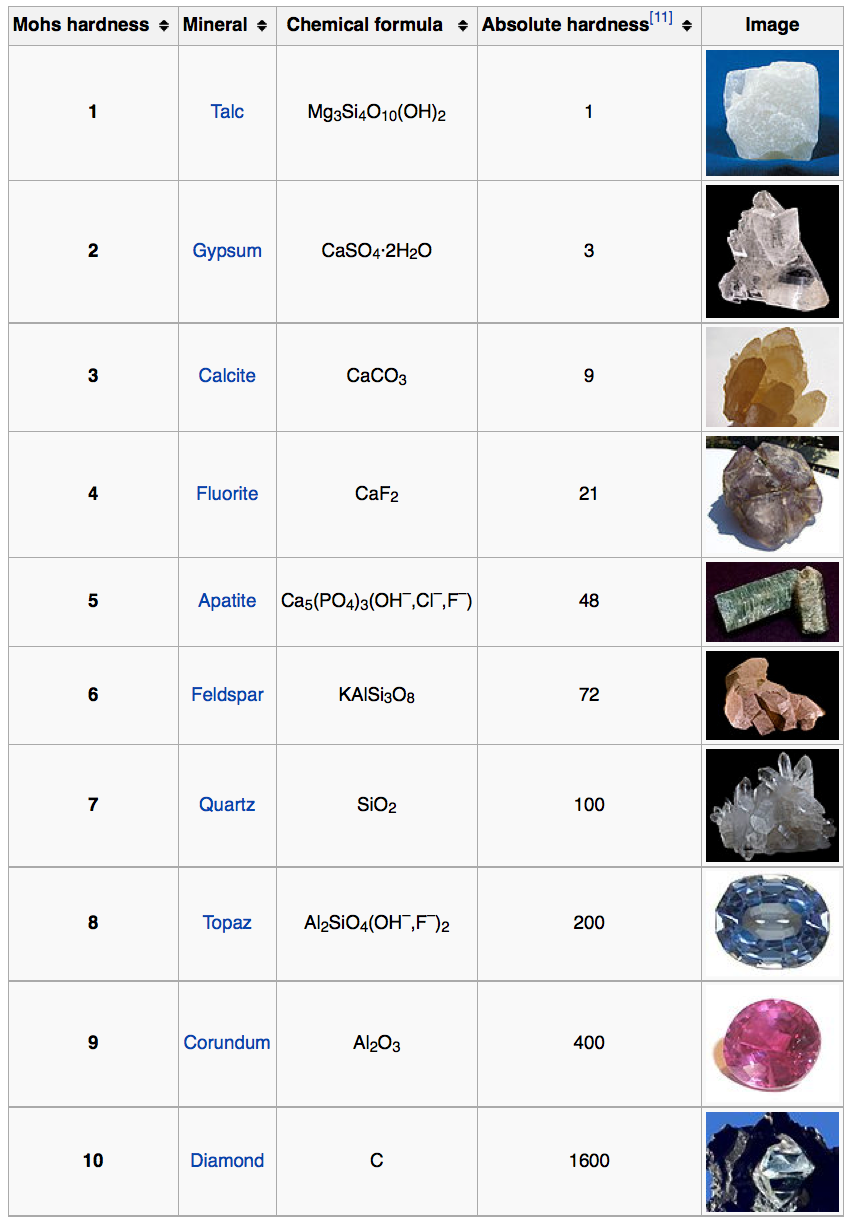What Is the Mohs Scale?
If you’re familiar with precious metals, you already know that the purity of gold is measured in karats. But do you know that gold is also rated on the Mohs Scale, where it ranks very low?
But don’t start to worry about that low ranking of any gold you own. The Mohs Scale is a measure of gold’s hardness and scratch-resistance, not an indication of its dollar value.
But what is this other scale that is used to classify metals? Let’s explore.
What Is the Mohs Scale?
Mohs Scale Image Courtesy of Wikipedia, http://en.wikipedia.org/wiki/Mohs_scale_of_mineral_hardness
The Mohs Scale, which is sometimes called the Mohs Scale of Mineral Harness, was invented in 1812 by a German geologist named Friedrich Mohs, who was trying to create a system to compare the hardness of different minerals. He knew, for example, that talc was an extremely soft mineral. But was it softer than gypsum, another very soft mineral?
Because Mohs saw the value of having a way to compare the specific softness of different minerals, he decided that he could contrast their resistance to being scratched. When he tried to scratch talc and gypsum, for example, he determined that less force was required to scratch talc, so talc appeared below gypsum on his new hardness scale.
What mineral is at the very top of the Mohs Scale? As you probably guessed, it is the diamond, which is pure carbon, and extremely resistant to being scratched. It rates a 10.
Where Do Metals Fall on the Mohs Scale?
In other words, which metals are easiest to scratch, and which are the hardest? Here’s a rundown.
- Extremely soft (rating of 1.5 on the Mohs Scale) - lead and tin
- Very soft (2.5 - 3) - magnesium, gold, silver, aluminum, zinc, copper
- Moderately soft (3.5 - 4) - iron and nickel
- Moderately hard (4.5) - platinum and steel
- Very hard (5 - 7) - palladium, beryllium, molybdenum, titanium, manganese, rhodium, uranium
- Extremely hard (7+) - tungsten, chromium
The History of Hardness
For thousands of years, metals have been mixed together – alloyed – to create a harder metal. In ancient times, that quest for hardness led to the creation of bronze (a mixture of tin and copper), which was created to be a harder version of copper that could be used in weapons and tools. Later on, we have other alloys like brass, pewter and steel.
So in many cases, the aim in creating alloys has been to add hardness to a metal that was already in widespread use. In other words, most modern alloys have been created to improve their rating on the Mohs Scale.
Related Posts:
The Mystery and Mastery of Gold Refining
Are White, Pink, and other Golds Worth Less than Yellow Gold?
What Is Karat Gold and How Can You Find Out What Yours Is Worth?
Some Fascinating – and Potentially Profitable – Facts You Never Knew about Refining Gold

